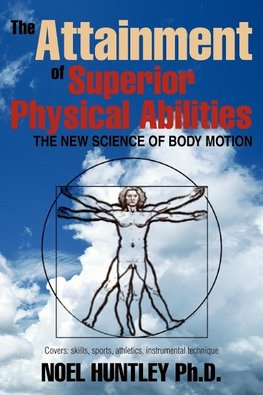
-
 Anglický jazyk
Anglický jazyk
The Attainment of Superior Physical Abilities
Autor: Noel Huntley
Readers and students of this new science of physical training will be surprised to find that the mechanism of physical mobility is far more sophisticated than their education has taught them. Current science assumes that physical movements of the body/limbs... Viac o knihe
Na objednávku
19.62 €
bežná cena: 21.80 €
O knihe
Readers and students of this new science of physical training will be surprised to find that the mechanism of physical mobility is far more sophisticated than their education has taught them. Current science assumes that physical movements of the body/limbs of humans and animals are entirely governed by the central nervous system (and autonomic nervous system), in which nerve impulses are sent to the muscles, causing contraction and subsequent motion of the body parts.
If this were the only mechanism present, the limbs would do little more than twitch; there would be no fine coordination, no control, and no ability to access the system (keep in control of the movements) while motion is occurring. The author, after 30 years of research has discovered that physical mobility (voluntary) is due to a dual system: 1) the central nervous system (CNS), and 2) an energy-field system. These two systems are synchronised perfectly. This energy-field system is a type of computer mechanism and is in fact nature's quantum computer system, an understanding of which is much sought within most scientific disciplines. We are normally only aware of sensing muscular activity, but if we, say, imagine moving the arm (no muscular activity), we will feel kinaesthetically the motion. This is the sensation of information within nature's computer system. (The neurophysiologist will tell you it is the physiological kinaesthetic sense around the muscles and joints, but in fact the latter accounts for only a tiny fraction of the overall sense.)
What must be recognised then is that there are two entirely different systems of training for these mechanisms of body motion: (1) The brain/body mechanism, and (2) the quantum computer system. Everyone is familiar with physical training, which comes under (1). There is adequate knowledge and methods available for this activity and we shall not encroach on this field except to present a summary covered in the chapters on physiology and psychology and, in particular, as they relate to the overall training. The other mechanism, nature's computer system, consists of an immense complex of energy fields (quantum/scalar/electromagnetic fields) around and within the body and limbs, which are, of course, invisible to the naked eye, and not detectable by existing scientific instruments, which can't handle higher-frequency scalar waves. This system requires a very different kind of training for development as we shall come to understand later in the book.
Now the reader who does not wish to acquire any knowledge on this subject but merely wants to concentrate on training can go directly to the exercises and procedures given in Chapter 10. Nevertheless, it should be pointed out that any understanding at all will be beneficial to progress. These new processes are not like those of regular physical training. With ordinary physical exercises, improvement may occur after only a day or so, but which can also be lost as rapidly as gained with a lapse in training. With this new system, however, although gains will be much slower, or not readily noticeable, they nevertheless will be permanent. Just as one never forgets how to ride a bicycle once learned, these mechanisms do not deteriorate or lose their information.
If, however, the reader does wish to acquire some understanding, then elementary theory is given in the main text of this book, in particular, there is an introduction in the chapter on training in case the reader wishes to go immediately to the training. But for the serious science student the appendices give some of the fundamental (and difficult) theory of this vast subject, which generalises to all other phenomena, for example, we now have a new basis with which to evaluate how insects fly or how for instance a humming bird beats its wings at such an enormous rate, creating a huge inertial problem for mainstream science explanations. Note that there is a chapter on instrumenta
- Vydavateľstvo: Xlibris
- Rok vydania: 2006
- Formát: Paperback
- Rozmer: 229 x 152 mm
- Jazyk: Anglický jazyk
- ISBN: 9781599263106









 Nemecký jazyk
Nemecký jazyk 

 Španielsky jazyk
Španielsky jazyk 
